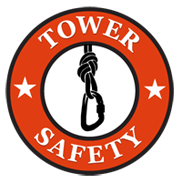https://www.ahsrescue.com/sport/gear-equipment.html?ahs_size=164
The importance of understanding how to make a knot and knowing the significance of ropes in human history goes back to at least 3500 BC. During prehistoric times ropes were used for hunting, pulling, lifting, carrying, and climbing. They are an essential part of everyday life when at heights and a necessity for rescue! Because of the wide variety of ropes available, it is good to know which type of rope is best suited for the purpose intended. Today’s rope manufacturers have created materials strong enough to retrieve the NASA space capsule or used for tugboats in the Panama Canal. Many ropes today are made from Nylon, Polyester, Polypropylene, Kevlar, Technora, Twaron, Vectran, and Zylo. The technical advancement of ropes is creating some with a 15:1 safety factor and they are becoming lighter, for instance 100’ of 11mm rope is only 6 lbs. We need to respect the ropes that allow us to do our job successfully every day.
Ropes:
Maybe your only means for rescue; always refer to the SAFE WORKING LOAD
Two primary types of rope are life safety and utility
- Life safety
- Used solely for supporting people
- Must be used when supporting the weight of one or more persons
- NFPA 1983 specifies design, construction, and performance criteria
- Never used as a utility rope
- Utility
- NOT to support a person, used as hoisting or lowering tools
- Used for hoisting, lowering, and securing tools and equipment
- Requires regular inspection
- Must not be used where life safety rope needed
Do not use life safety rope as a utility rope.
With every good rope, should come the skill of a well-dressed knot, as it is will save your life. Often it is the simplest of skills we learn, which are the most useful. Knot making is a simple mechanical skill, but it takes practice and repetition. According to “Popular Science” there are over 170,000 different knots.
Knots and Hitches:
A Knot is used to join two ropes together or a rope to itself. If done correctly a knot will hold shape regardless of it being fixed to something else.
A Hitch is used to fix a rope to another object, such as a carabiner or a pole, and relies on that object to hold
When tying knots, being tidy and precise helps eliminate a failure under the load. To “Dress” a knot, make sure the knot is recognizable and leave just the right amount of tail ends. If a tail/s are too short, the knot may slip and come undone. Dressing a knot includes removing the excess slack and to “set” a knot, tighten to maintain its proper form and leave a little extra running end after the knot (tail). a “Backing Knot” like a simple over-hand knot after the primary knot. If the primary knot slips a bit, the backing knot will often prevent complete failure.
BOWLINE – https://www.youtube.com/watch?v=a-8DktjFGfk
It has been used by sailors for hundreds of years and the FAA also recommends tying down light aircraft with a bowline. It is both easy to tie and untie; most notably, it is easy to untie after being subjected to a load and is generally considered a reliable knot, the deficiencies are a tendency to work loose when not under load, to slip when pulled sideways and the bight portion of the knot to capsize in certain circumstances. To address these shortcomings, often used with a safety knot.
FAMILY of 8’s – https://www.youtube.com/watch?v=7Hgqkz5zgos
The Figure Eight follow through is one of the strongest knots. It forms a secure, non-slip loop at the end of a rope. Also known as the Flemish Bend, this is the most widely used tie-in knot by mountain climbers and professional rope access technicians. The reason is that it is strong, secure and easy to visually inspect.
BUTTERFLY KNOT
Butterfly Knot due to the form it takes while tying, forms a secure loop in the middle of a rope. It will accommodate a load in any of three directions independently or together. Also useful for making non-slip loops in the middle of a rope to attach carabiners to provide points of attachment for other lines.
FISHERMAN’S KNOT – https://www.youtube.com/watch?v=xwx3Rg_R5Z4
The real name of the Fisherman’s knot is the Improved Clinch knot, years ago many people called it the Fisherman’s knot because every angler knew how to tie it, and it was often the first knot they learned to attach a fishing line to a hook. It’s a knot for joining two lines with a symmetrical structure consisting of two overhand knots, each tied around the standing part of the other.
CLOVE HITCH – https://www.youtube.com/watch?v=qcAKXCr8zaI
A clove hitch is two successive half-hitches around an object, and it can be useful for securing ropes to pipes, posts, or trees. One benefit of this knot is it’s fairly easy to adjust the length of the rope if you need to.
PRUSIK – https://www.youtube.com/watch?v=lRM2i2ouLb4
It is a friction hitch used to attach a loop of cord around a rope. The term Prusik is a name for both the loops of cord and the hitch, and the verb is “to prusik”. It slides when not weighted along a tight rope but jams solidly upon loading and is often made by tying the ends of cord with a Double Fisherman’s Knot.
Most importantly- Care for your Ropes—THEY WILL SAVE YOUR LIFE
1910.184 Subpart N
OSHA and ASME require a documented Periodic inspection of your lifting and rigging equipment every 12 months (at a minimum) and monthly to quarterly inspections in more severe service conditions, based on the following criteria of frequency of use:
According to Sterling Rope:
https://sterlingrope.com/journal/136-four-simple-rope-care-techniques
- Do not overload rope
- Avoid shock loading rope whenever possible
- Do not use rope in applications beyond the heat rating of the rope
- Be sure to use the correct size rope for the job
- Avoid any area around the linear length of loaded rope
- Keep rope away from all chemicals to prolong safe working life
- It is the climber’s responsibility to use rope in a safe manner!!!
- Keep a rope log
Be Safe.
Be on Rope.






 AHS RESCUE
AHS RESCUE
